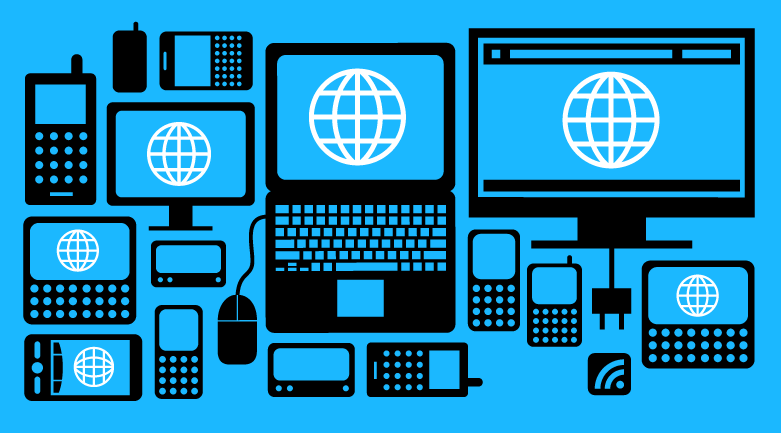“We need balance between users and service providers which ensures equal treatment and no discrimination”[1], insists one of the youngest European Parliament’s members, Eva Paunova, during the panel discussions on Net neutrality at the European Dialog on the Internet Governance (EuroDig 2015). This argument is not new for these debates that have been ongoing since the late 1990s[2]; however, something has changed.
This year we witness the first fruitful attempt of interested parties to produce a common statement on net neutrality[3], based on multistakeholderism[4]. The result of these common efforts was presented to public discussion at the EuroDig 2015. This fact is definitely a positive step forward, though not all of primary intentions and hopes related to it were realized. It is doubtful whether they ever will be, due to the sophisticated and controversial nature of the issue as well as other peculiarities involved in the governance of the Internet.
The net neutrality issue emerged as a reaction to the attempts of Internet Service Providers (ISPs) to occupy the role of “gatekeepers”[5] controlling what information users can access online, blocking or slowing users’ connections to content. These practices threaten to destroy the open Internet with free communication online and to significantly infringe the users’ rights. Meanwhile, net neutrality implies the fair treatment of all data that travels in the Internet and assurance of the fair competition among internet providers that would preserve a healthy digital ecosystem and reduce the discrimination of users.
One of the means of achieving net neutrality is balanced Internet governance based on the inclusion of relevant stakeholders, such as governments, technical community, academia, public and private sector. On the other hand, such a diversity of stakeholders and the significant differences in their interests broaden the definition of net neutrality to the obscurity, complicating the possibility of achieving any consensus, despite the multiple endeavors.
That is why, the net neutrality statement introduced at the Eurodig, 2015 and based on the multistakeholders’ inputs is a rather serious milestone in this process. The document was supposed to bring some consensus on different perspectives, interests and principles with regard to net neutrality and was open for the submission of comments and editing suggestions to anyone willing to participate, from governments and businesses to human rights activists and end-users. Its final draft indeed specifies some definitions and aspects important for dealing with the net neutrality issue. It provides a long and precise definition of Network neutrality by itself[6] along with unified definitions of such indispensable concepts as the Internet, Specialized Service, Internet Access Service and Internet Access Provider. Yet Zero Rating[7] that gains its popularity among the tech giants, e.g. Facebook’s Internet.org initiative[8], and violates net neutrality principles, was left uncovered due to lack of a consensus. Nevertheless, the final draft includes some important insights into multi-stakeholders positions, such as business, human rights and end-users perspectives. So far so good?
Rather not. Many participants were not leaving lighthearted the EuroDig event. Their hope of getting a real working document by the end of EuroDig meeting did not come true. Even though some common ground was achieved, the document was not unanimously accepted by voting at the last EuroDig’s session. It still rests no more than a final draft, open for further discussions and corrections, and thus, it does not have a serious influence on the current Internet governance. Such a stakeholders’ inability to reach an agreement impedes the development of further initiatives on net neutrality concerning the issues of users’ education on making conscious choices online as well as the role of gatekeepers in the Internet: who, how, when and why.
Besides, the discussion of net neutrality statement expected to test the efficacy of the “multistakeholderism” as an approach to policy-making. And there are some lessons to be drawn out for the future debates. First and foremost, the differences in opinions, levels of involvement of and understanding of technical issues among different interested parties should be mitigated by neutral mediators and by the means of using a “common language”. Meanwhile, all information on a draft and its versions should not only be published in a publicly accessible space, but also largely promoted and made visible to all participants. As it was revealed during EuroDig discussions, some participants were not aware about the ongoing drafting of the Net neutrality statement. Lastly, it is essential to state the deadlines for drafts’ readings and remarks submissions, because, surprisingly, some stakeholders did admit that they had not read the draft even at the stage of the final voting.
In a nutshell, the achievement of a common ground for net neutrality implementation requires not only finding a consensus among the diversity of stakeholders, but also a strong participants’ dedication to the subject combined with educational and organizational measures facilitating the drafting process.
[1] Twitter, Eva Paunova @evapaunova 5 June, 2015.
[2] Bello, Pablo & Jung, Juan (May 6, 2015). Net Neutrality: Reflections on the Current Debate. Retrieved from: https://ourinternet.org/publication/net-neutrality-reflections-on-the-current-debate/
[3] http://www.eurodig.org/eurodig-2015/net-neutrality-statement/nn-beta/
[4] “multistakeholder mechanism is one where all the relevant stakeholders are engaged in making the decisions that affect them” (IGF 2014 Best Practice Forum on Developing Meaningful Multistakeholder Mechanisms).
[5] The persons who decide which information will be accessible, to whom and what conditions. The term by itself first appeared in the Kurt Lewin’s book “Forces Behind Food Habits and Methods of Change” in relation in the role of women in choosing the food for consumptions.
[6] “the principle according to which Internet traffic shall be treated equally, without discrimination, restriction or interference regardless of its sender, recipient, type or content, so that Internet users’ freedom of choice is not restricted by favouring or disfavouring the transmission of specific Internet traffic, regardless of whether such favouring or disfavouring is based on: technical measures, …, financial measures, … or any other measures leading to uneven treatment of services.”
[7] the access to some Internet services provided at zero or cheaper cost, so-called “fast lines” and “sponsored data”. More on the issue https://gigaom.com/2014/04/26/forget-fast-lanes-the-real-threat-for-net-neutrality-is-zero-rated-mobile-traffic/
[8] http://webfoundation.org/2015/02/guest-blog-the-real-threat-to-the-open-internet-is-zero-rated-content/














Leave a Comment
Your email address will not be published. Required fields are marked with *